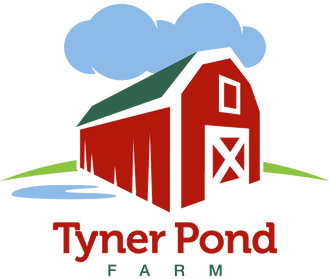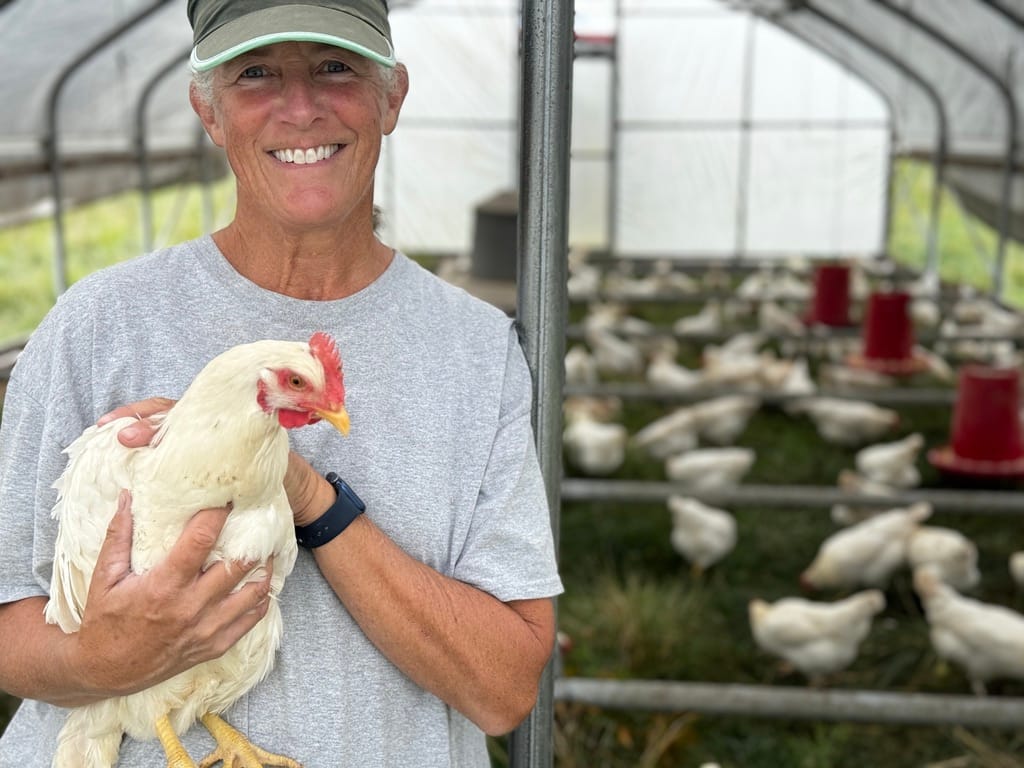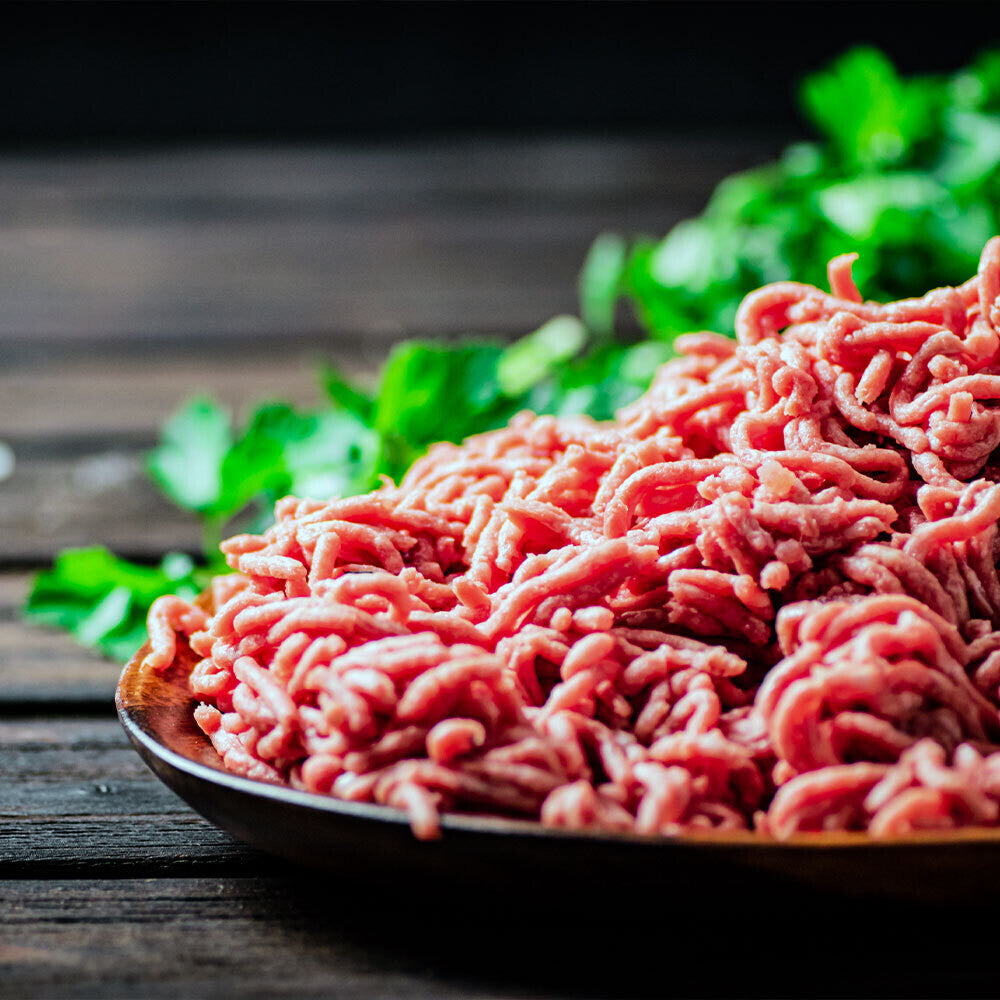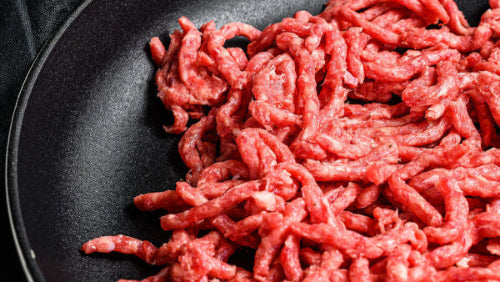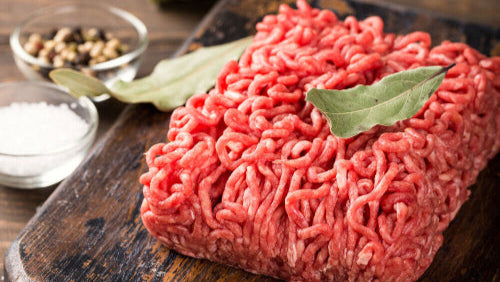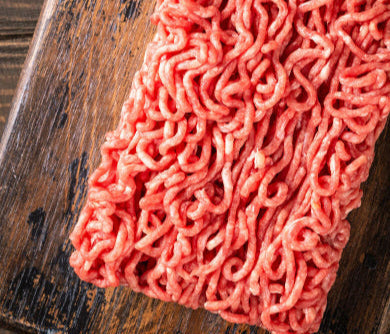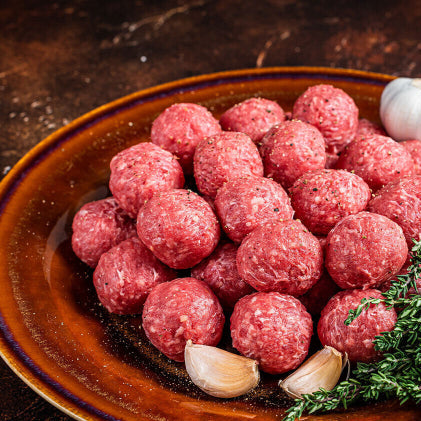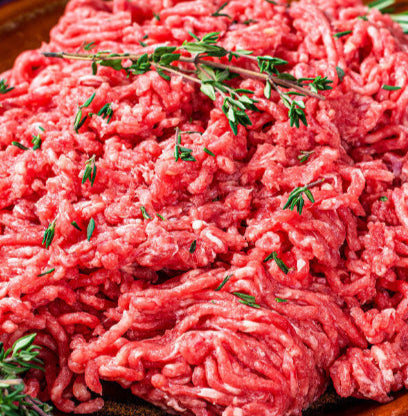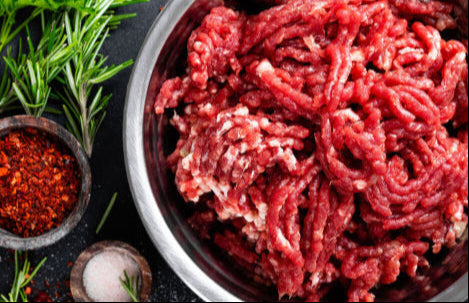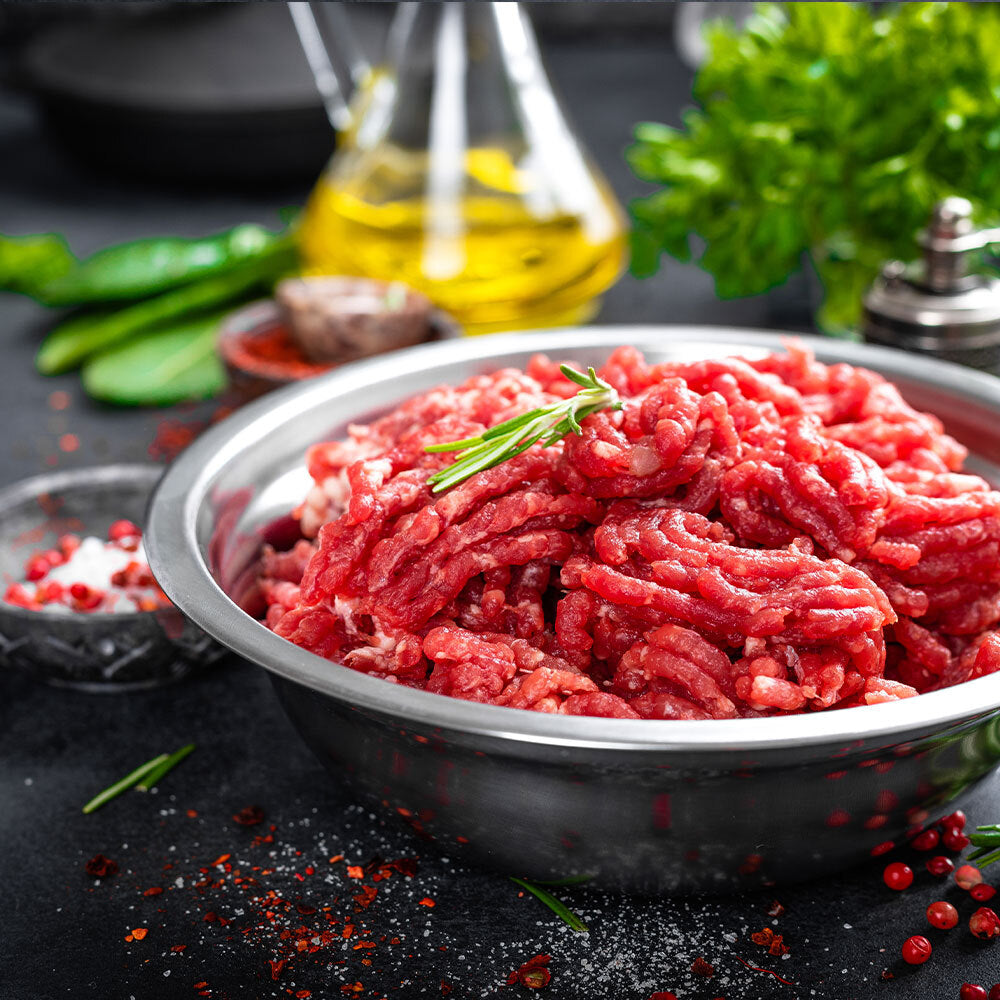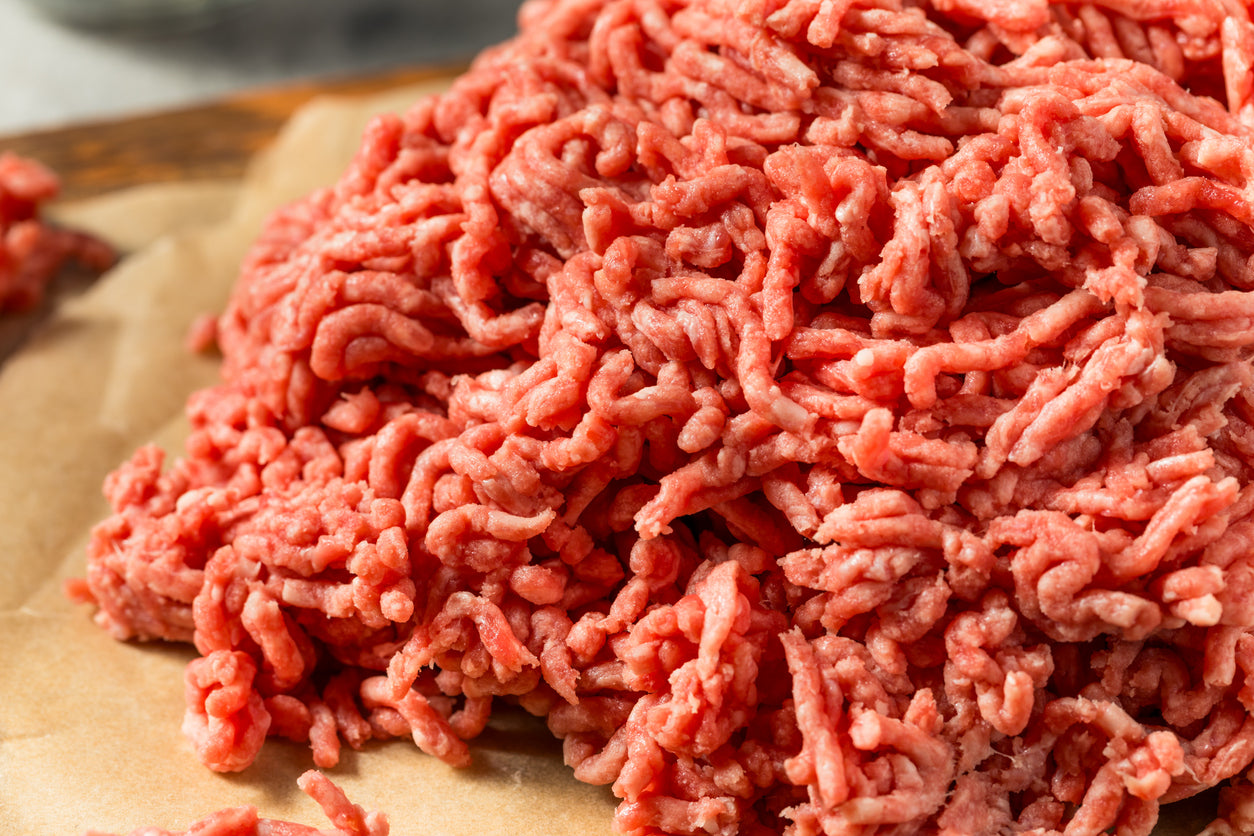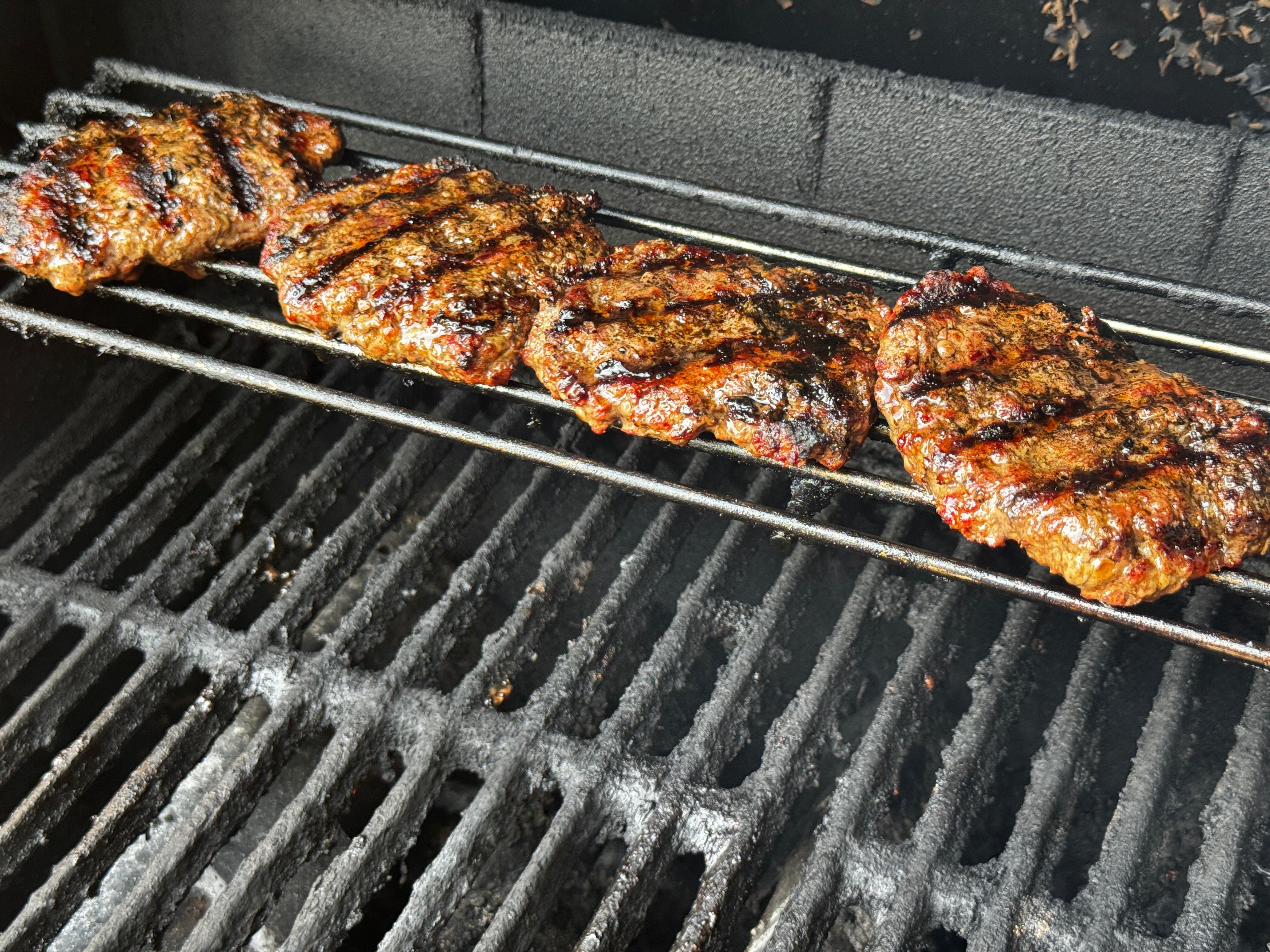
About TPF Partner Beef
At Tyner Pond Farm, we’ve always believed that food should be raised with care, respect for the land, and a commitment to health. For years, we’ve focused on raising our own cattle on pasture, using managed rotational grazing to build soil health and produce the most nutrient-dense beef possible. But as demand for our beef continues to grow, we face a challenge—we can’t personally raise enough cattle to supply everyone.
Rather than compromise on quality, we’re introducing a new category: TPF Partner Beef — cattle sourced from other trusted grass-based farms. These farms share our fundamental values, and we ensure that all Partner Beef is 100% grass-fed and grass-finished. While their management practices may differ from ours, one thing remains constant: no grain, ever.
 Notice the deep yellow fat—clear evidence of a lifetime spent on pasture, rich in carotenoids from fresh grass.
Most of our TPF Partner Beef comes from what are known as cull cows—female cattle that have spent several years on pasture, typically between 3-5 years old. While the term might sound unappealing to those unfamiliar with it, cull cows are an incredible source of high-quality, flavorful beef.
Grass-fed cull cows have had more time to develop rich, complex flavors. Their meat has a deeper color, stronger marbling, and a firmer texture, making it an excellent choice for slow cooking, braising, and smoking. Aaron Franklin, of the famous Franklin Barbecue, exclusively uses beef from cull cows, arguing that it produces superior results when handled correctly.*
Notice the deep yellow fat—clear evidence of a lifetime spent on pasture, rich in carotenoids from fresh grass.
Most of our TPF Partner Beef comes from what are known as cull cows—female cattle that have spent several years on pasture, typically between 3-5 years old. While the term might sound unappealing to those unfamiliar with it, cull cows are an incredible source of high-quality, flavorful beef.
Grass-fed cull cows have had more time to develop rich, complex flavors. Their meat has a deeper color, stronger marbling, and a firmer texture, making it an excellent choice for slow cooking, braising, and smoking. Aaron Franklin, of the famous Franklin Barbecue, exclusively uses beef from cull cows, arguing that it produces superior results when handled correctly.*
 Aaron Franklin, In his book Franklin Barbecue, expresses a strong preference for old dairy cows as a source of beef due to several key factors:
Aaron Franklin, In his book Franklin Barbecue, expresses a strong preference for old dairy cows as a source of beef due to several key factors:
Why Grass-Fed Cull Cows?
 Notice the deep yellow fat—clear evidence of a lifetime spent on pasture, rich in carotenoids from fresh grass.
Most of our TPF Partner Beef comes from what are known as cull cows—female cattle that have spent several years on pasture, typically between 3-5 years old. While the term might sound unappealing to those unfamiliar with it, cull cows are an incredible source of high-quality, flavorful beef.
Grass-fed cull cows have had more time to develop rich, complex flavors. Their meat has a deeper color, stronger marbling, and a firmer texture, making it an excellent choice for slow cooking, braising, and smoking. Aaron Franklin, of the famous Franklin Barbecue, exclusively uses beef from cull cows, arguing that it produces superior results when handled correctly.*
Notice the deep yellow fat—clear evidence of a lifetime spent on pasture, rich in carotenoids from fresh grass.
Most of our TPF Partner Beef comes from what are known as cull cows—female cattle that have spent several years on pasture, typically between 3-5 years old. While the term might sound unappealing to those unfamiliar with it, cull cows are an incredible source of high-quality, flavorful beef.
Grass-fed cull cows have had more time to develop rich, complex flavors. Their meat has a deeper color, stronger marbling, and a firmer texture, making it an excellent choice for slow cooking, braising, and smoking. Aaron Franklin, of the famous Franklin Barbecue, exclusively uses beef from cull cows, arguing that it produces superior results when handled correctly.*
Why Does Grass-Fed Beef Have Yellow Fat?
Grass-fed cattle consume a diet rich in beta-carotene, a pigment found in fresh forage. Beta-carotene is fat-soluble, meaning it accumulates in the animal's fat over time, giving it a yellow hue. The more time an animal spends exclusively on pasture, the more noticeable the yellow fat becomes. This is why older, long-term grass-fed animals tend to have deeper yellow fat.What to Expect: Ground Beef vs. Other Cuts
If you're just buying ground beef, you probably won’t notice much difference between TPF Partner Beef and what we raise ourselves. The grind naturally balances out any variations in texture, making for the same high-quality burger or taco meat you’re used to. However, if you’re buying steaks, roasts, or other whole cuts, you’ll want to handle this beef a little differently. Because these animals have lived longer and moved more, their meat is naturally leaner and more developed. That means proper preparation is key to getting the best results. See Specific Steak Instructions Here...How to Cook Cull Cow Beef: Dry Brining and Slow Cooking
The best way to prepare beef from older cattle is dry brining—salting the meat in advance and letting it rest in the fridge for at least a few hours, ideally overnight. This process helps the salt penetrate deeply, breaking down muscle fibers and enhancing tenderness. After dry brining, low-and-slow cooking is the way to go. Smoking, braising, and roasting allow the connective tissue to break down, resulting in tender, flavorful beef. A slow-cooked roast or smoked brisket from a cull cow can be some of the best beef you’ve ever had if given the right care.A Responsible and Practical Choice
By sourcing beef from partner farms, we’re ensuring that more people have access to real grass-fed beef—not the feedlot "grass-fed" beef you find in supermarkets. At the same time, we’re making use of an often-overlooked but highly valuable source of meat. It’s a responsible choice, both environmentally and economically. TPF Partner Beef helps us stay true to our mission while giving our customers more access to high-quality, nutrient-dense food. We appreciate your support as we serve more of our community—without compromising our values.* Footnote
 Aaron Franklin, In his book Franklin Barbecue, expresses a strong preference for old dairy cows as a source of beef due to several key factors:
Aaron Franklin, In his book Franklin Barbecue, expresses a strong preference for old dairy cows as a source of beef due to several key factors:
- Flavor development: Franklin states, "I think old dairy cows are some of the best beef I've ever had, just because it's an older animal, it has the flavors, you've had time to develop the muscles, the fat". The age of the animal allows for more complex and intense flavors to develop.
- Muscle structure: Older cows have had time to develop their muscles, which contributes to the texture and taste of the meat.
- Fat content: While the fat content might differ from other breeds, the extended lifespan allows for unique fat development that enhances the overall eating experience.
- Beefiness: Franklin notes that older cows, including dairy cows, often have a more pronounced "beefiness" compared to other breeds like Wagyu.
- Unique characteristics: The meat from older dairy cows offers distinct qualities that skilled cooks can leverage in their preparation techniques1.
Tags:
Previous post
The FSIS Salmonella Proposal: A Dangerous Threat to Small Producers
Next post
